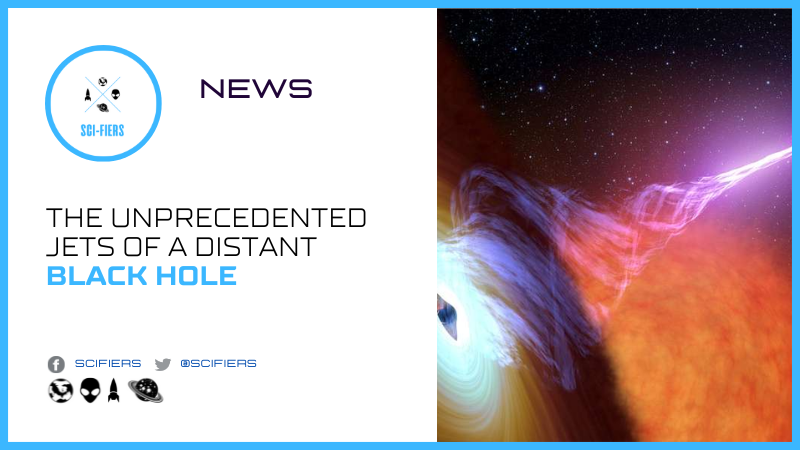In a far-off galaxy, when the universe was only 6.3 billion years old, a massive black hole let out a thunderous anamoly. This cosmic event unleashed two enormous jets, now identified by researchers as the largest ever observed. Stretching a staggering 23 million light-years—equivalent to the length of 140 Milky Way galaxies aligned in a row—these jets are a remarkable sight. “You could say this is the largest object that we know of in the universe,” says Martin Hardcastle, an astronomer at the University of Hertfordshire and co-author of the study, in an interview with New Scientist’s Alex Wilkins.
Black holes are typically portrayed as insatiable entities that consume everything in their path, but they can also expel material. As matter spirals into a black hole, some of it heats up and interacts with the black hole’s magnetic field, resulting in powerful bursts of light and particles that escape its gravitational pull. The emissions from these jets can take millennia to reach Earth, allowing us to witness events from a time when the jets were still forming. Described in a recent article in Nature, this colossal jet structure has been aptly named Porphyrion, inspired by the giant from Greek mythology who battled the Olympian gods. True to its name, Porphyrion is immense; its power output rivals that of trillions of suns. The black hole at its center likely consumed a sun’s worth of material annually for a billion years, according to Hardcastle.
These twin jets originated from a supermassive black hole located 7.5 billion light-years from Earth. For a billion years, this colossal structure continuously ejected material, allowing the jets to grow to their remarkable lengths. “I would have thought something like this was impossible,” comments Laura Olivera-Nieto from Germany’s Max Planck Institute for Nuclear Physics, who was not involved in the study. “It seems too large to have sustained the jets for such a long duration.”
Source: scitechdaily.com

